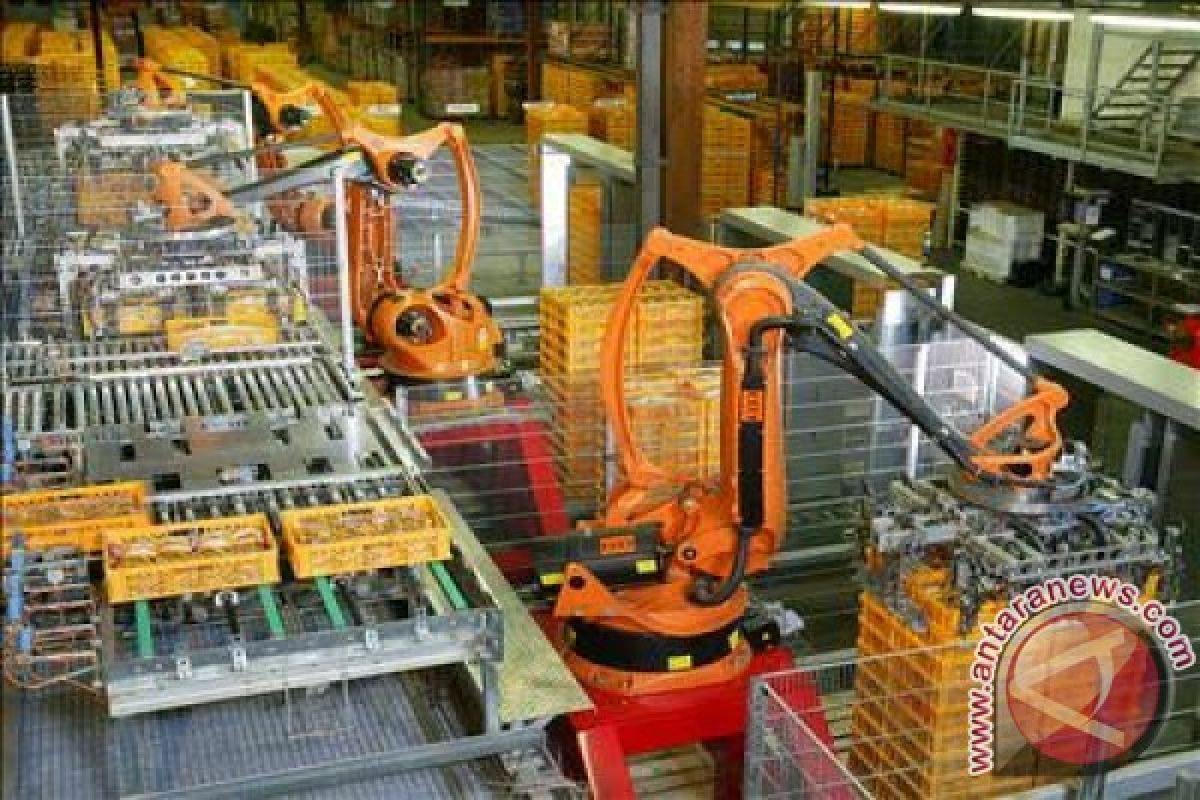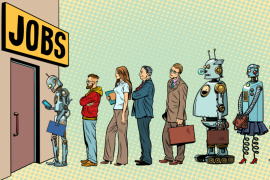Technology which connects the digital world with the physical one, resulting in new innovations such as artificial intelligence and machine-learning, robotics, nanotechnology, 3-D printing, genetics and biotechnology.
Smarter machines and devices bring many advantages, while new technologies make production and use of new inventions cheaper and easier than ever. But automation can also cost workers jobs.
The future world of work as known as the new industrial revolution, combined with other socio-economic and demographic changes, will transform labour markets in the next five years, leading to a net loss of over 5 million jobs in 15 major developed and emerging economies.
Skills and jobs displacement will affect every industry and geographical region, but losses can be offset by job growth in key areas, based on a report of the World Economic Forum.
In terms of overall impact, the report indicates that the nature of change over the next five years is such that as many as 7.1 million jobs could be lost through redundancy, automation or disintermediation, with the greatest losses in white-collar office and administrative roles.
This loss is predicted to be partially offset by the creation of 2.1 million new jobs, mainly in more specialized job families, such as Computer and Mathematical or Architecture and Engineering.
For example, according to the report, Healthcare is expected to experience the greatest negative impact in terms of jobs in the next five years, followed jointly by Energy and Financial Services and Investors. The industry that stands to create the most jobs, perhaps less surprisingly, is Information and Communication Technology, followed by Professional Services and Media, Entertainment and Information professionals.
Following this, Head of Uni Score (Strategic Campaigns, Organizing, Research and Education) Andy Snoddy said that the new industrial revolution would give big impacts to all over the world.
"Changes caused by digitalization, artificial intelligence, robotics, and other innovations. It is almost impossible to see the end of this process. So we should look ahead," Snoddy said.
For sure, people will see an increase in online shopping. Shoppers are going to the web for most of their purchases.
"Consumers are now buying more things online than in stores. As a result, many stores are closing now as we can see in Malaysia, Indonesia and even in the United States," he pointed out.
As stores continue to close, many shopping malls will be forced to shut down as well.
"E-commerce lead to the closing of physical stores. However e-commerce will create new opportunities. There is a giant warehouse with goods and it needs to be packed and distributed to the customers," he said.
Trade unions should focus on these opportunities. There will be more logistics companies, he said.
"I have been in Indonesia for two days. i have seen hundreds or thousands people on motorbikes working for different companies. The deliver things to the customers. The sector should be organized well. I can not say it will be easy or difficult. but there is a massive growth in it, we should concern about it," Snoddy remarked.
To summarize, he noted, the industrial revolution provide different impacts in each sector.
"We should look at the facts in telecommunication, financial services, and other sectors. It will be different speed in different countries.The economy, the logistics and the culture, and other factors will determine the speed of these changes," he said.
The changes is unstoppable so we have to adopt it. The employees or members of trade unions should be retrained.
"Give the members a chance to be retrained. The new industrial revolution will create different new jobs. Ten years ago, we never imagined about app-based motorcycle taxi service, but now people use the motorcycle taxi service," he stated.
With regard to strategies to protect the workers, labor union association should make an analysis regarding the future world of work.
"Then, there should be collective bargaining. The most important one is collective agreement for retraining. Give the opportunity to workers to be retrained and companies will pay for the training. The labor union should concern political roots that can influence government to ensure the training opportunities," he pointed out.
Meanwhile, International Operations Officer of Trade Union Solidarity Centre of Finland SASK Anna Perttula said that robotics and autonomous system would not overtake jobs.
"Invasion, overtake. These are the kind of words are a little bit dramatic," Perttula said.
Totally, she noted, people will not become subordinate of robots. Robots will accompany people to do jobs.
"I think robots will infiltrate in many culture of peoples lives," she remarked.
The revolution in robotics and autonomous systems has already begun. People live in a connected era where affordable technology interacts with them. and with other natural and physical assets in our environment, turning data into information for a global audience.
"There are many good things from digitalization and automation," she stated.
Artificial Intelligence helps communities in developing nations implement local renewable energy systems by providing intelligent automation and monitoring almost like an online doctor, making sure the system is healthy and working properly.
It means communities not only gain access to affordable and sustainable energy but can also engage in trading of any surplus energy to other consumers or utility companies.
"We can see how technology influences people. The development of technology will be more quickly in the next twenty years," she said.
Protection to Workers
Organization Manager of Service Union United (PAM) Heidi Lehikoinen said that the scheme of unemployment fund could protect the workers who become unemployed.
In the future world of work, the unemployment fund was essential to protect the workers.
The Unemployment Fund pays earnings-related unemployment allowance to its unemployed members during periods of unemployment.
The amount of your earnings-related unemployment allowance depends on your income before unemployment and it is usually higher than the basic unemployment allowance paid by the Social Insurance Institution of Finland (Kela).
"The contribution of members is about 1.5 percent from their salary. 0.85 percent from 1.5 percent is used for unemployment fund. The remaining is used for activities of unions," Lehikoinen.
The Unemployment Fund also pays its members job alternation compensation for periods of job alternation leave.
The purpose of the unemployment funds is to pay earnings-related security to their members during periods of unemployment.
Employed or self-employed persons who work for the private or the public sector can become members of an unemployment fund, she said.
The unemployment funds carry out a statutory duty, which means that eligibility for its benefits is laid down in law.
The unemployment funds are regulated by the Financial Supervisory Authority.
To become a member of an unemployment fund, you must fill in an application form. To qualify for membership, you must be an employee or a self-employed person. Studies do not prevent you from joining a fund, she concluded.
(A063/KR-BSR/O001/B019)
Reporter: Azis Kurmala
Editor: Bayu Kuncahyo
Copyright © ANTARA 2017












